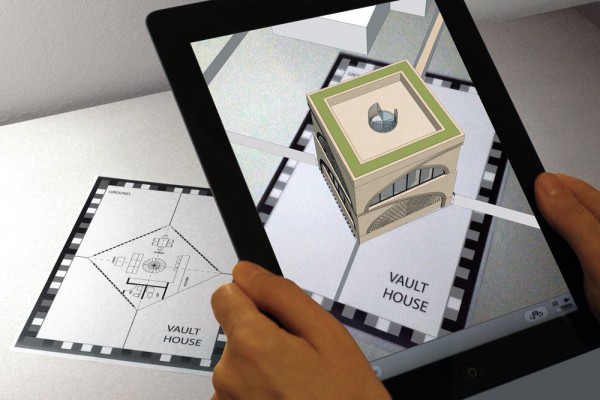Architecture in an Age of Augmented Reality
This research paper explores the Opportunities and Obstacles for Mobile Augmented Reality across Design, Construction, and Post-Completion.
The paper identifies high-level uses for Mobile AR (MAR) across these phases, and explains the challenges currently preventing MAR’s uptake by Australian architectural industry. Written primarily as an introduction to Mobile Augmented Reality for practicing architects in Australia, the paper may also interest professionals within the Architecture, Engineering, and Construction (AEC) industries globally, as well as AR developers producing applications for Architectural uses.
In Design, MAR may be used to augment a real site with proposed virtual models at full scale, and overlay physical presentation media with 4D content. MAR applications may inform the design process by bringing greater contextual awareness during design review, and may communicate architectural narrative. In Construction, MAR applications may geo-locate BIM data directly on the construction site to aid in site set-out. Task support applications may guide users through complex assembly procedures; and MAR applications for real-time field reporting can allow the direct geo-tagging of elements while on site. Use of MAR may also extend to site navigation and way-finding, while in Post-Completion, MAR has applications in facilities management, and maintenance tasks. State-of-the-art MAR Use Cases ground each Opportunity discussed in the paper, drawn from work by leading AR researchers; AEC industry leaders; academics; software providers; and AR developers worldwide. (refer Research Stimulus for more).
The Obstacles preventing the uptake of MAR by architectural industry currently encompass technological challenges, human factors, and financial constraints. Technological hurdles range from hardware limitations- such as MAR displays and tracking challenges- to difficulties in virtual data preparation. Human factors hindering MAR’s uptake include disillusionment with AR following media hype; user resistance to change; user safety considerations; and privacy factors. Finally, financial constraints play a significant role in slowing the uptake of MAR by architectural professionals in Australia.
This project was made possible through the NAWIC International Women's Day Scholarship 2013. For information about the scholarship and NAWIC, please visit www.nawic.com.au.





